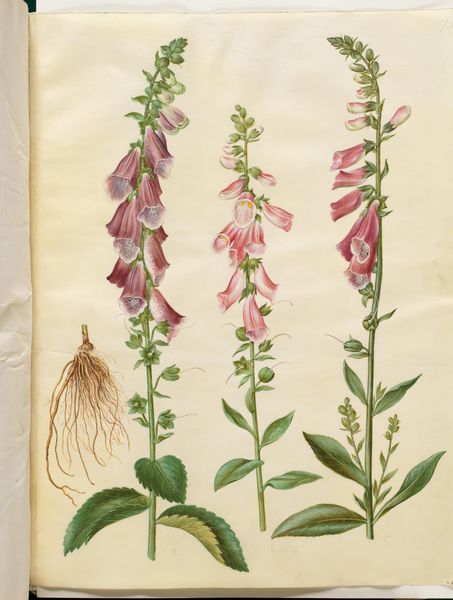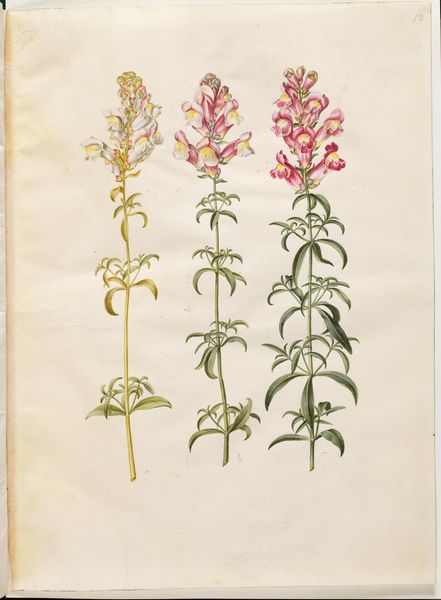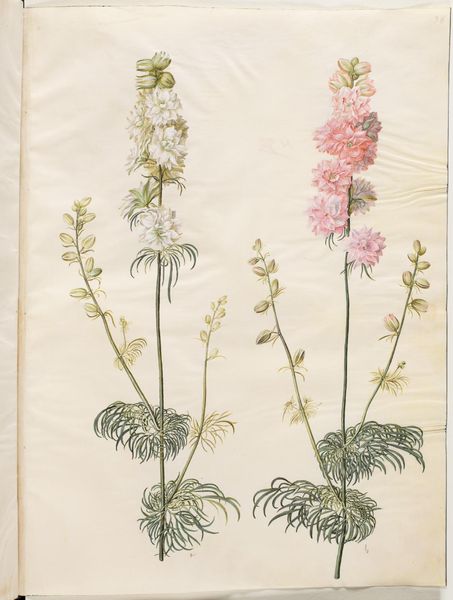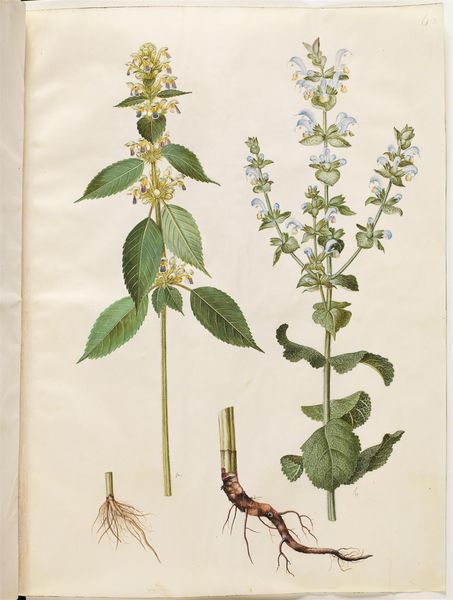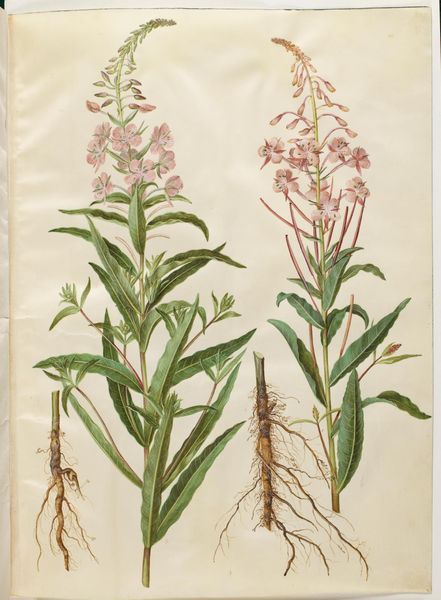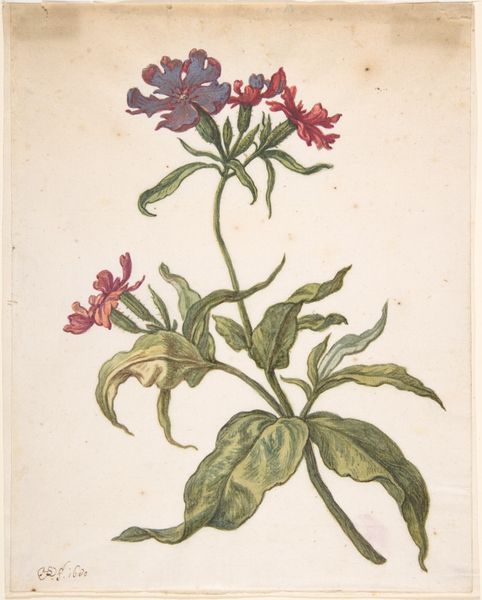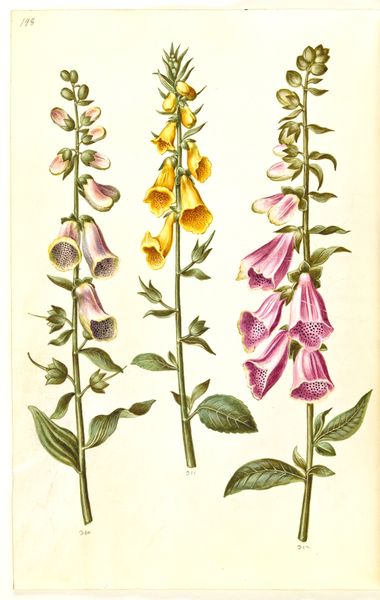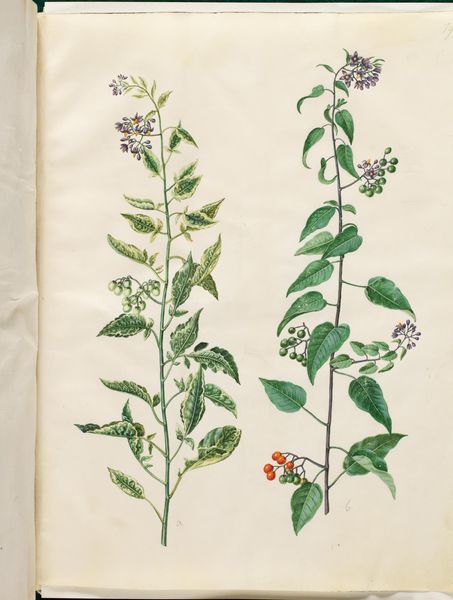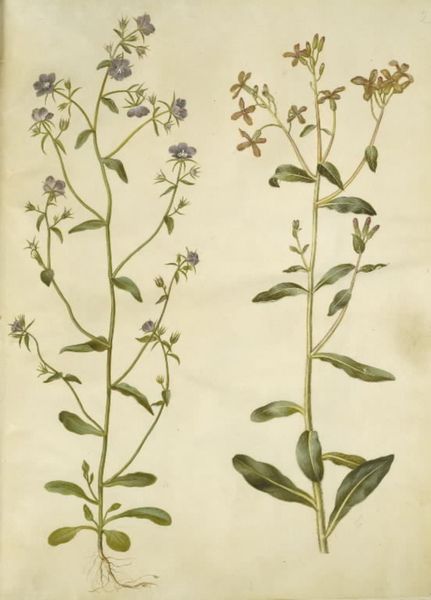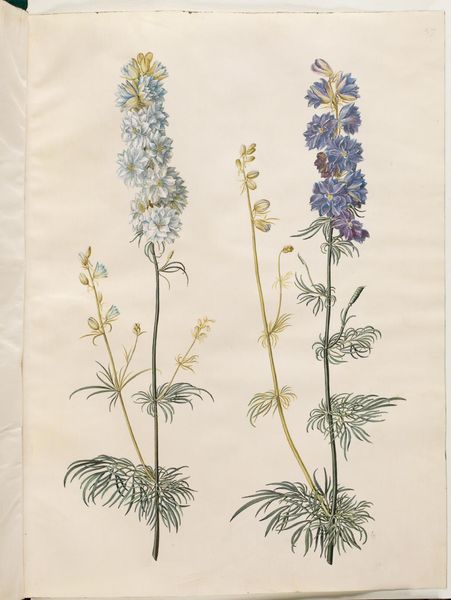
Lobelia cardinalis (kardinal-lobelie); Campanula latifolia (bredbladet klokke) 1649 - 1659
0:00
0:00
drawing, coloured-pencil, gouache, watercolor
#
drawing
#
coloured-pencil
#
gouache
#
watercolor
#
coloured pencil
#
botanical art
#
watercolor
#
realism
Dimensions: 505 mm (height) x 385 mm (width) (bladmaal)
Curator: Today, we're looking at a botanical illustration by Hans Simon Holtzbecker. Created sometime between 1649 and 1659, it showcases two distinct plants: Lobelia cardinalis, or kardinal-lobelie, and Campanula latifolia, the bredbladet klokke. The work combines watercolor, gouache, and colored pencil on paper. Editor: It’s beautiful! The vibrant red of the lobelia really jumps out against the pale background. The level of detail is incredible, especially the texture of the leaves. Curator: Holtzbecker was a sought-after artist in his time, commissioned to document various species. These botanical illustrations weren't simply about aesthetics. They served a crucial scientific function, recording nature's diversity for study. Editor: Absolutely. It makes me think about colonialism, actually. The plants, native to different regions, were cataloged and consumed into a European worldview, often with exploitative economic implications. Curator: That's a very relevant perspective. These meticulously detailed renderings aided in understanding and ultimately exploiting resources, impacting ecosystems and local knowledge. Editor: Exactly. But on a purely aesthetic level, there’s a compelling duality at play, too. The bright, almost aggressive red of the Lobelia contrasts sharply with the subdued, delicate hues of the Campanula. It almost feels symbolic of opposing forces or personalities. Curator: I find your reading fascinating, especially how it mirrors a prevalent sentiment in seventeenth-century European thought that sought to categorise, tame, and arrange everything from nature to social systems. Editor: And looking at it today, knowing what we do about ecological exploitation, we have to see this kind of work with that layered understanding. Art as information, art as beauty, and art as a reflection of societal power structures. Curator: Indeed. These historical lenses enrich the viewing experience immeasurably. It serves as a point of intersection of various spheres—colonial histories and gender studies. Thank you for drawing this perspective to the forefront. Editor: My pleasure! It’s amazing how much a simple botanical illustration can reveal about history, culture, and even ourselves.
Comments
No comments
Be the first to comment and join the conversation on the ultimate creative platform.

